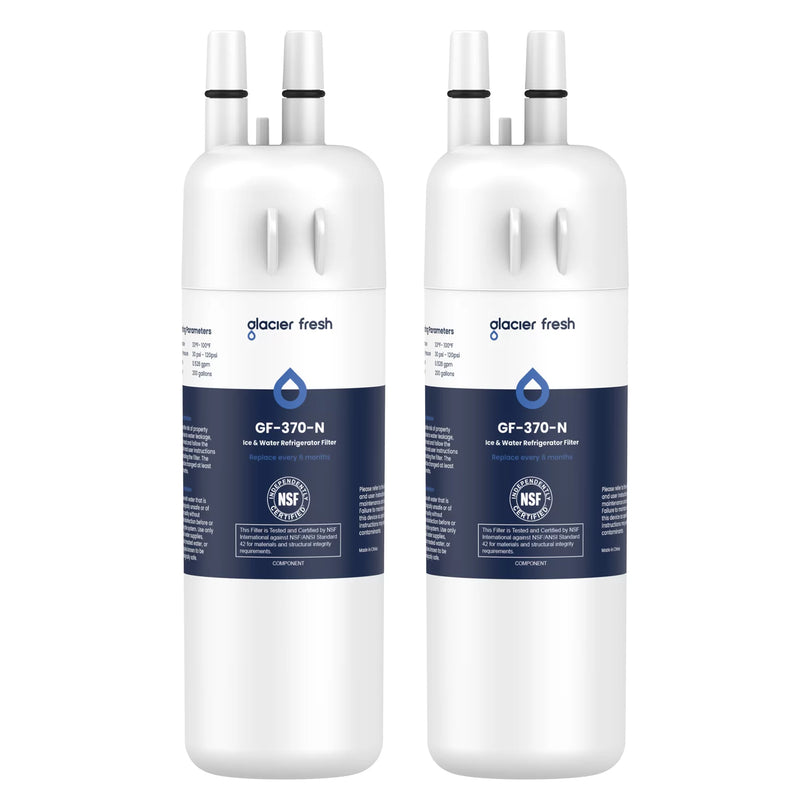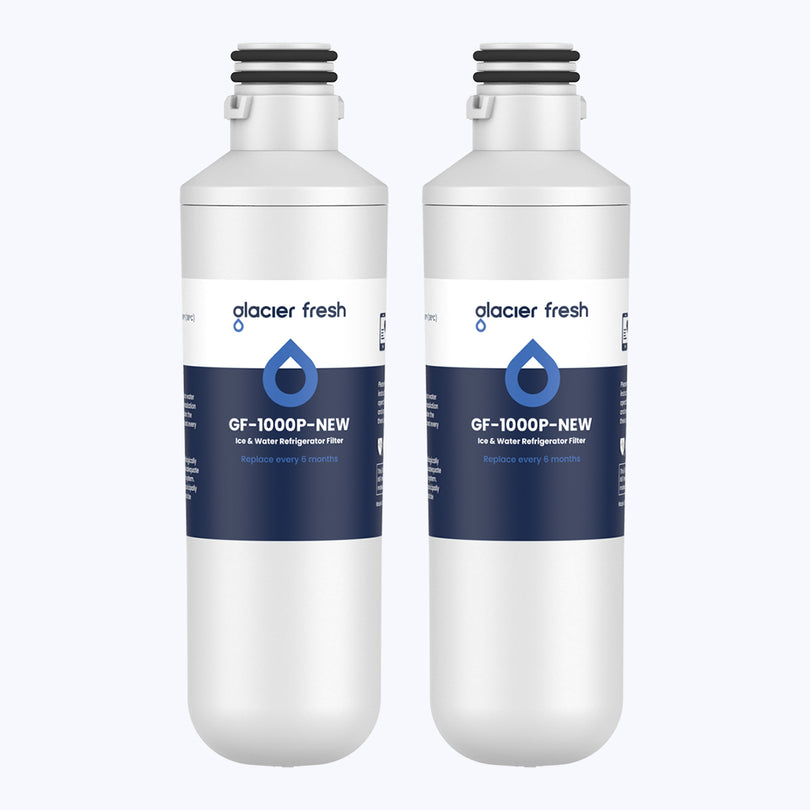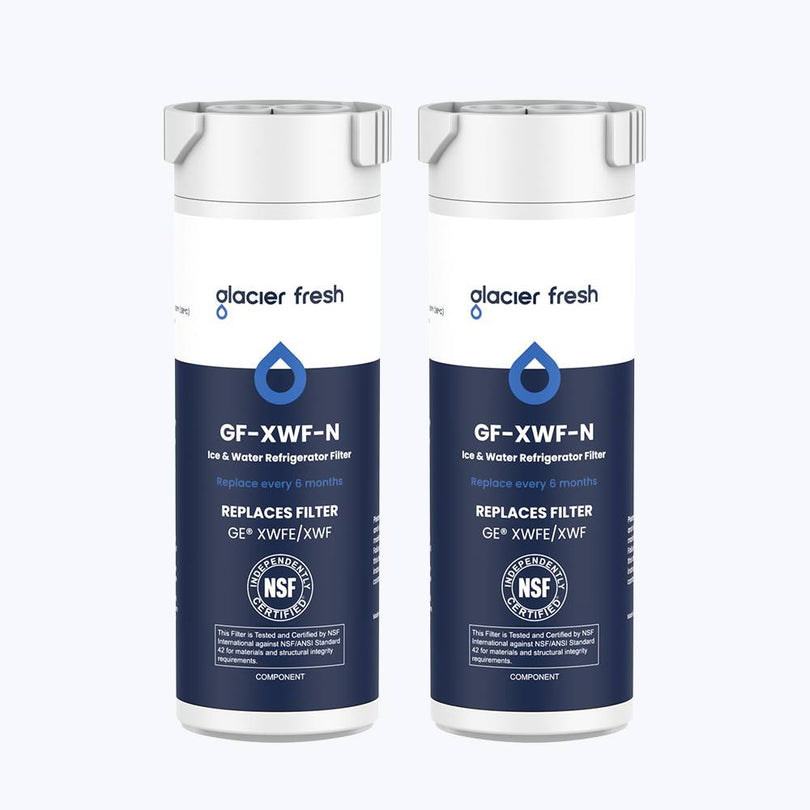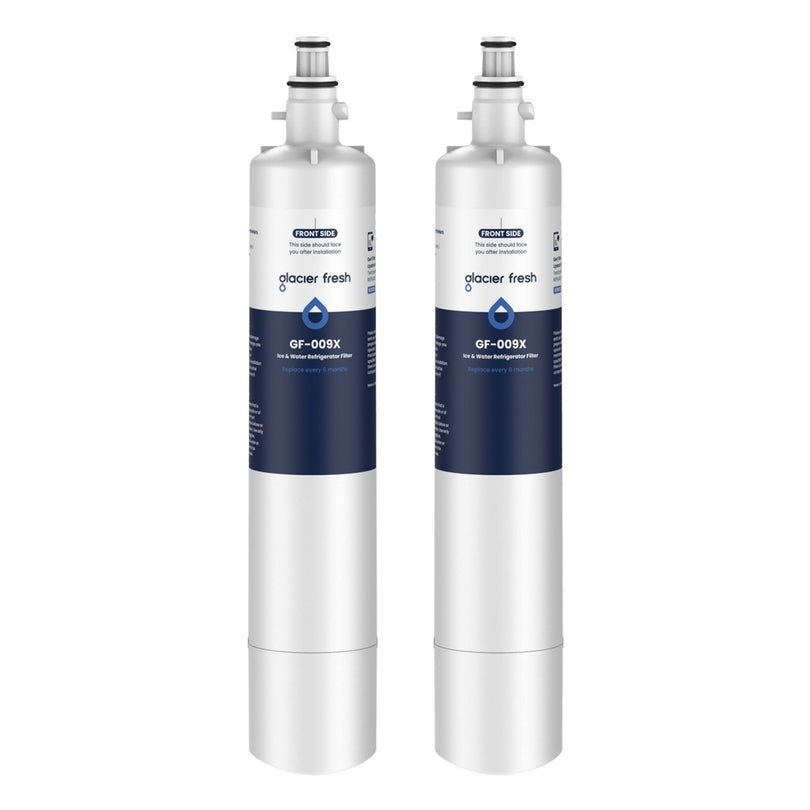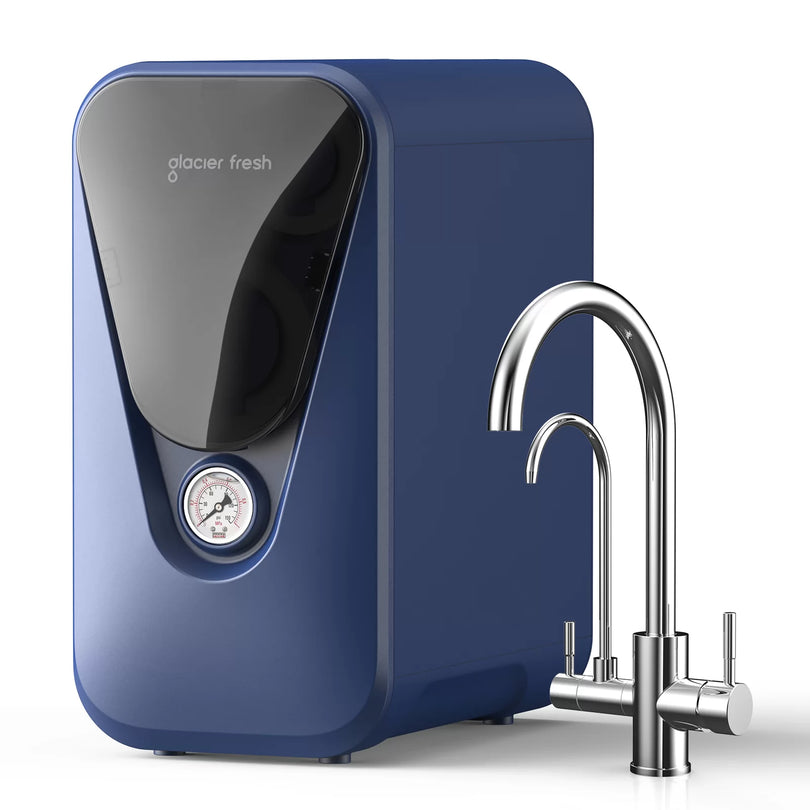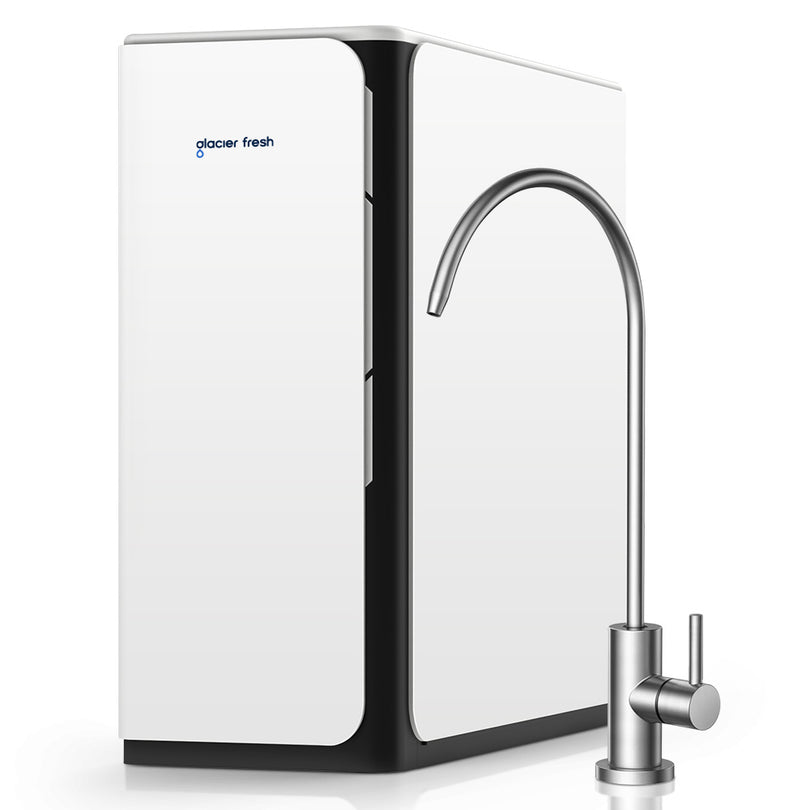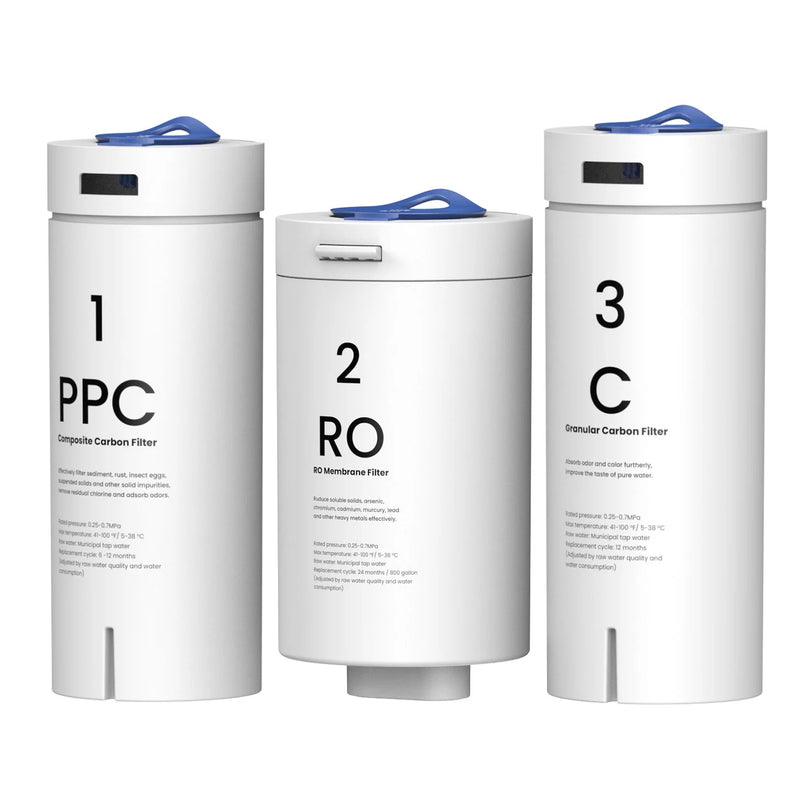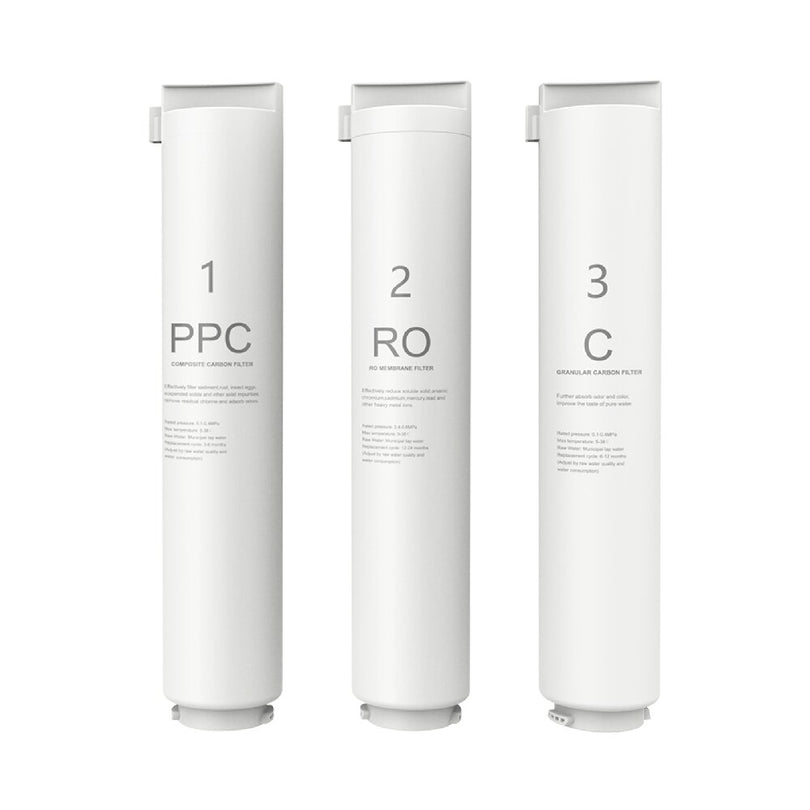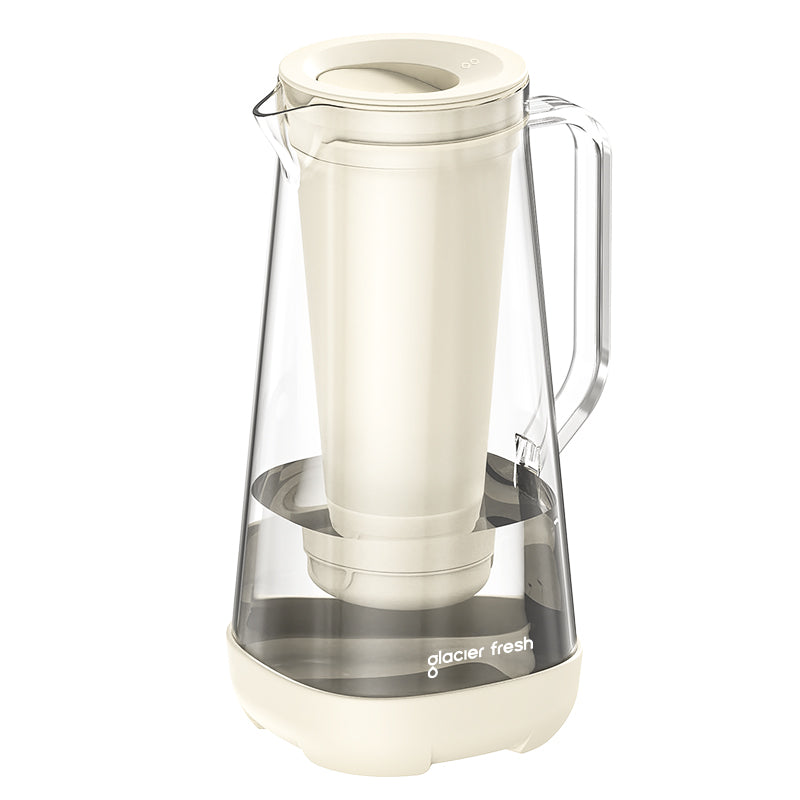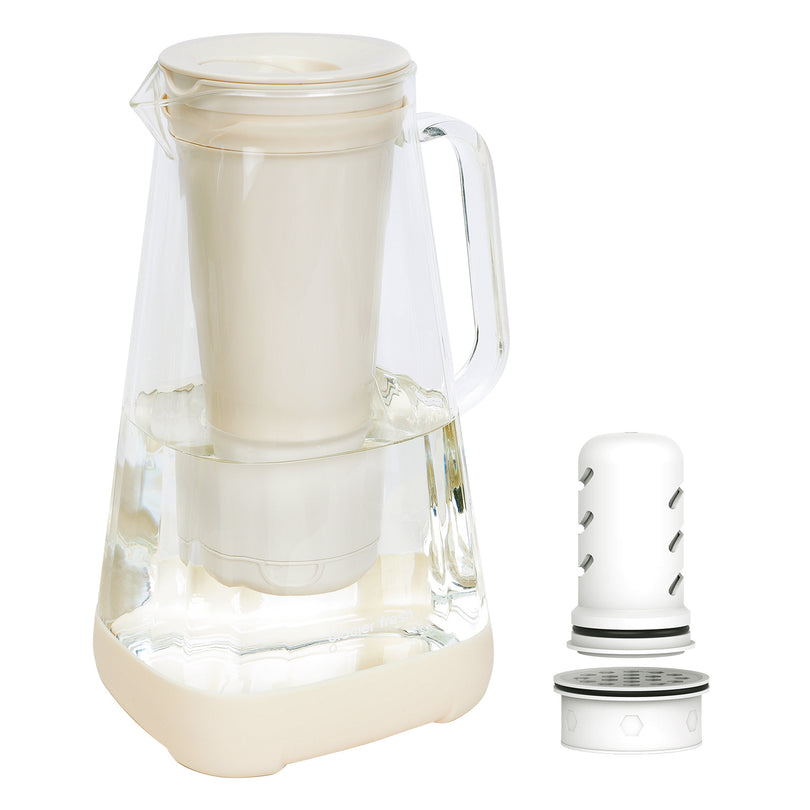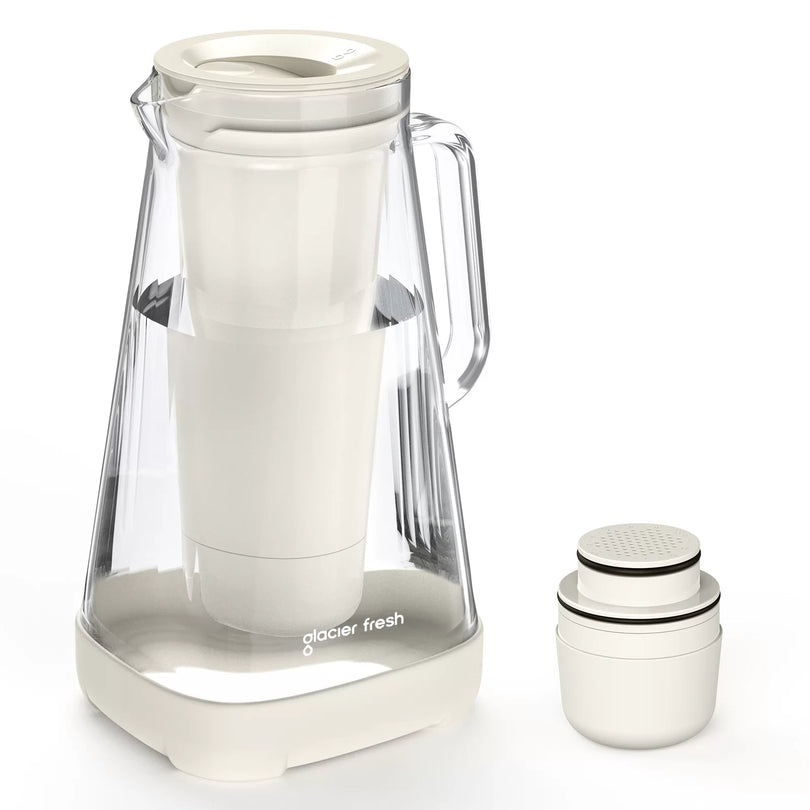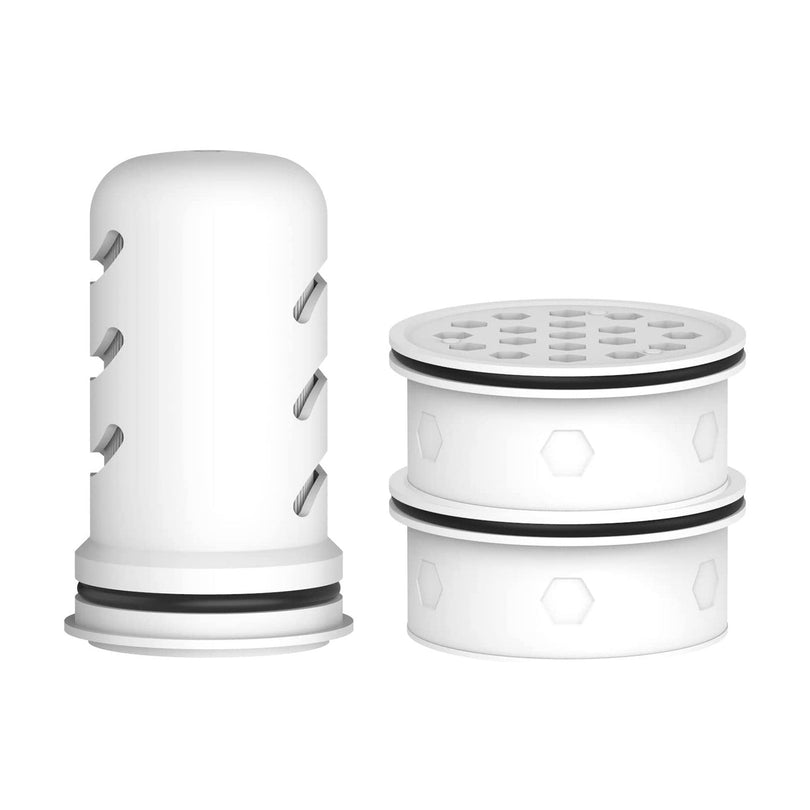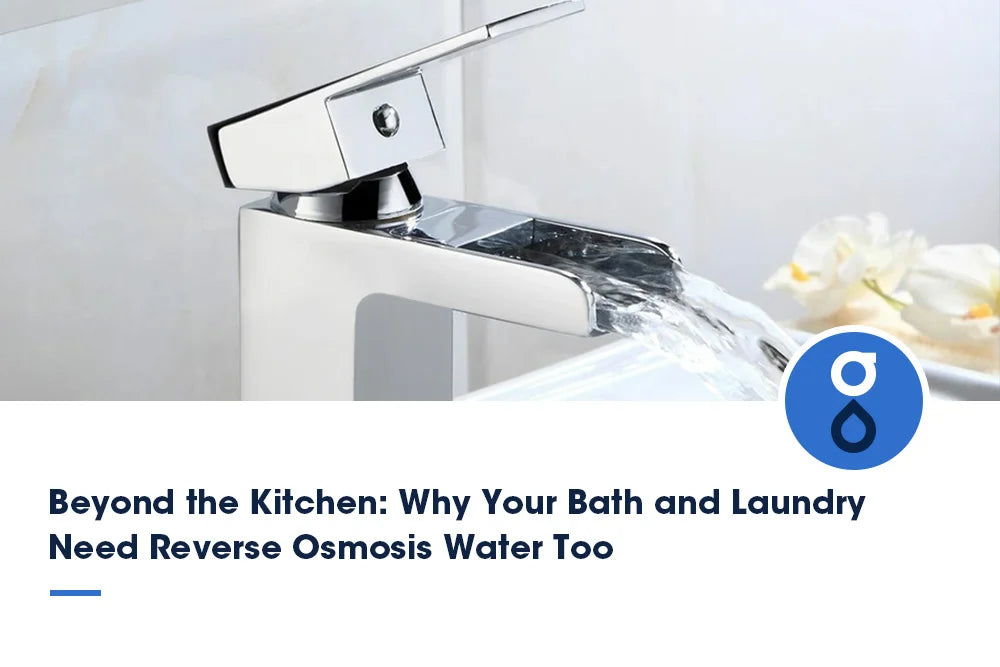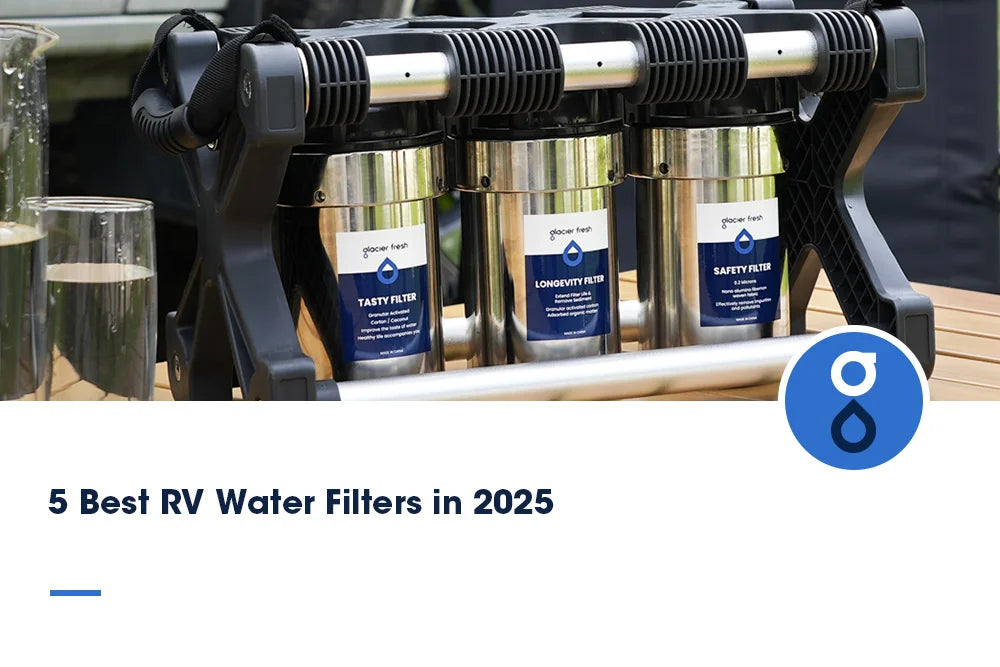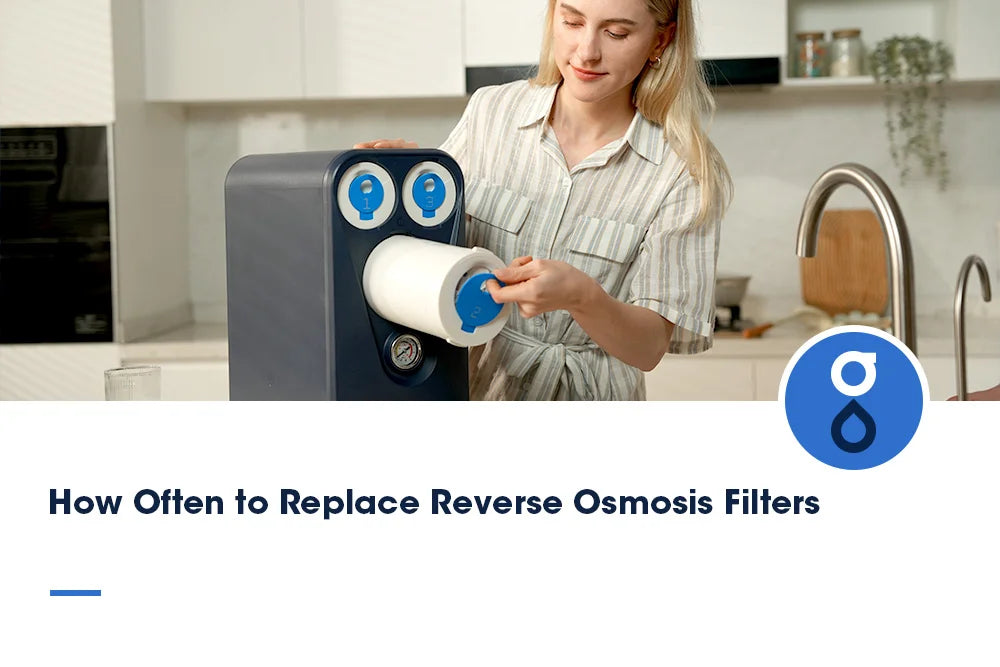Table of Contents:
Was ist Umkehrosmosewasser und was macht es so besonders?
Warum profitiert Ihr Badezimmer von saubererem (RO-ähnlichem) Wasser?
Warum die Wäsche mit weicherem/RO-behandeltem Wasser besser wird
So erweitern Sie die Wasserversorgung durch Umkehrosmose über die Küche hinaus
Wer sollte Umkehrosmosewasser für Bad und Wäsche in Betracht ziehen?
Die ökologischen und finanziellen Vorteile der Verwendung von Umkehrosmosewasser
FAQs
Abschluss
Sie haben wahrscheinlich eine Umkehrosmoseanlage (RO) installiert (oder denken darüber nach), um den Geschmack Ihres Trinkwassers zu verbessern und Verunreinigungen aus Ihrem Küchenhahn zu entfernen. Das ist clever. Das Wasser, in dem Sie baden und Wäsche waschen, kommt jedoch täglich mit Ihrer Haut, Ihren Haaren, Textilien und Geräten in Berührung – und auch die Qualität dieses Wassers ist wichtig.
Gestützt auf von Experten begutachtete Forschungsergebnisse und praktische Anleitungen von Wasser- und Gesundheitsbehörden erklärt dieser Artikel, warum Hausbesitzer, denen die Wassersicherheit am Herzen liegt, eine Ausweitung der RO- oder gezielten Filterung über die Küchenspüle hinaus in Betracht ziehen sollten.
Was ist Umkehrosmosewasser und was macht es so besonders?

Bei der Umkehrosmose wird Wasser durch eine halbdurchlässige Membran gepresst, die gelöste Salze, Metalle und viele organische Moleküle blockiert und so sehr Wasser mit niedrigem TDS-Gehalt (Gesamtgehalt gelöster Feststoffe) an der Verbrauchsstelle. Das Ergebnis? Außergewöhnlich sauberes, reines und oft weicheres Wasser, das nicht nur besser schmeckt, sondern in fast jeder Anwendung eine bessere Leistung bringt.
Gesundheitsbehörden (CDC/EPA) beschreiben die Umkehrosmose als wirksame Technologie zur Entfernung von anorganischen Stoffen, Schwermetallen und verschiedenen chemischen Verunreinigungen. Beachten Sie jedoch, dass die Leistung vom System, der Membran sowie den Vor- und Nachfiltern abhängt. Während es üblich ist, eine Umkehrosmoseanlage unter der Spüle für Trinkwasserzwecke zu installieren, können die gleichen Vorteile auch überall dort genutzt werden, wo Wasser mit Haut, Haaren, Kleidung oder Geräten in Berührung kommt.
Warum profitiert Ihr Badezimmer von saubererem (RO-ähnlichem) Wasser?
Das Haar sieht besser aus und fühlt sich besser an
Chloriertes und mineralreiches Wasser entzieht dem Haar natürliche Öle, kann es spröde oder stumpf machen und beeinträchtigt die Farbbeständigkeit. Schwimmer wissen das: Längerer Kontakt mit Chlorwasser kann das Haar austrocknen und schädigen. Das Filtern oder Entfernen von Chlor/Härte in der Dusche verbessert die Ausspülbarkeit des Shampoos und reduziert den „Stroheffekt“.
Gesündere Hautbarriere und weniger Reizungen
Mineralien aus hartem Wasser und Chlor können die natürlichen Öle und den pH-Wert der Haut beeinträchtigen und Rückstände hinterlassen, die die Haut austrocknen und sie anfälliger für Reizungen machen. Bei Menschen mit empfindlicher Haut kann das Vermeiden dieser Stressfaktoren unter der Dusche helfen, Trockenheit, Juckreiz und Entzündungen zu reduzieren.
Sauberere Armaturen, weniger Kalkablagerungen, einfachere Wartung
Mineralische Ablagerungen (Kalk) bilden sich an Duschköpfen, Wasserhähnen und Glastüren. Die Reduzierung von Mineralien hält die Armaturen sauberer, verkürzt den Schrubbaufwand und beugt Verstopfungen vor. Langfristig hilft dies, den Austausch der Armaturen zu vermeiden.
Warum die Wäsche mit weicherem/RO-behandeltem Wasser besser wird
Bessere Reinigung mit weniger Reinigungsmittel
Weiches Wasser ermöglicht eine effizientere Wirkung von Seife und Waschmittel. Mit Umkehrosmosewasser können Sie deutlich weniger Waschmittel verwenden und trotzdem eine gründliche Reinigung erzielen. Das spart Geld und reduziert die Belastung Ihres Zuhauses mit Chemikalien.
Weichere, hellere und langlebigere Stoffe
Mineralien in hartem Wasser lagern sich an den Fasern der Textilien ab und lassen die Kleidung nach mehrmaligem Waschen stumpf und steif aussehen. Umkehrosmosewasser , das frei von diesen Mineralien ist, schont die Kleidung. Weiße Wäsche bleibt weißer, die Farben bleiben leuchtend und die Beschaffenheit des Stoffes bleibt deutlich länger erhalten.
Weniger Maschinenwartung
Hartes Wasser hinterlässt Kalk- und Mineralablagerungen in Ihrer Waschmaschine, was ihre Effizienz und Lebensdauer verringert. Umkehrosmosewasser verhindert diese Ablagerungen und sorgt so für weniger Wartungsaufwand und eine längere Lebensdauer des Geräts.
So erweitern Sie die Wasserversorgung durch Umkehrosmose über die Küche hinaus
Point-of-Use für wichtige Spots
· Untertisch-RO im Waschbereich – versorgen Sie die Waschmaschine über eine spezielle RO-Leitung (oder eine behandelte Leitung), um Mineralien in den Waschgängen zu reduzieren. Untertisch- oder Inline-POU-Einheiten sind vergleichsweise günstig und vermeiden die Behandlung des gesamten Hauses.
· Gefilterte oder enthärtende Duschköpfe – diese reduzieren Chlor und einige Mineralien in der Dusche und bieten sofortige Vorteile für Haut und Haar, ohne dass eine ganze Hausinfrastruktur erforderlich ist. Dermatologen und Verbraucherratgeber empfehlen dies oft als ersten Schritt zur Verringerung der Reibung.
Optionen für den Zugangspunkt (gesamtes Haus)
RO für das ganze Haus (Eintrittspunkt) Wasser mit wirklich niedrigem Mineralgehalt im ganzen Haus, aber es ist in der Regel teurer, erfordert Platz, eine professionelle Installation und laufende Wartung und kann erhebliche Abfallmengen erzeugen, wenn es nicht mit Strategien zur Rückgewinnung und Wiederverwendung konzipiert wird.
Verbraucherberichte und die EPA-Richtlinien empfehlen eine sorgfältige Prüfung vor der Wahl einer RO-Anlage für das ganze Haus. Viele Hausbesitzer entscheiden sich für einen Hybridansatz (Enthärter oder POE-Vorbehandlung + RO an Trinkwasserhähnen).
Hybrider Ansatz
Wasserenthärter für die Wasserhärte (schützt Geräte und verbessert die Wäsche) + Umkehrosmosesystem unter der Spüle Zum Trinken und Kochen (entfernt Blei, PFAS und Nitrate). Dies begrenzt die RO-Abwässer auf die POU-Nutzung und reduziert gleichzeitig Kalkprobleme im gesamten Haus. Vor- und Nachteile hängen von Ihren Wassertestergebnissen und den Prioritäten Ihres Haushalts ab.
Wer sollte Umkehrosmosewasser für Bad und Wäsche in Betracht ziehen?
· Familien, die bereits Wert auf sauberes Trinkwasser legen und sich gleichzeitig Vorteile für Haut, Haare und Wäsche wünschen.
· Haushalte mit empfindlicher Haut, Ekzemen oder chronischen Hauterkrankungen. (Es gibt Hinweise darauf, dass Wasserhärte und Desinfektionsmittel Probleme mit der Hautbarriere verschlimmern können.)
· Jeder, der sich über bestimmte Schadstoffe Sorgen macht, auf die RO abzielt (z. B. Blei, Arsen, bestimmte PFAS) – testen Sie zuerst Ihr Wasser und wählen Sie ein System, das für diese Schadstoffe zertifiziert ist.
Die ökologischen und finanziellen Vorteile der Verwendung von Umkehrosmosewasser
Sparen Sie bei Wasch- und Reinigungsmitteln
Saubereres Wasser macht Waschmittel effizienter, was den Produktverbrauch und die Kosten langfristig senkt. Schätzungen zufolge steigt der Waschmittelverbrauch bei hartem Wasser, was auf reale, wiederkehrende Einsparungen hindeutet, wenn das Wasser vor Ort enthärtet oder gefiltert wird.
Niedrigere Reparatur-/Ersatzkosten
Weniger Kalkablagerungen – weniger verstopfte Ventile, langlebigere Heizungen und Pumpen, was weniger teure Reparaturen bedeutet. Studien zu den Auswirkungen von Kalkablagerungen auf die Wärmeübertragung zeigen messbare Effizienzverluste bei Kalkablagerungen.
Wasserverschwendung vs. Nutzen
Herkömmliche Umkehrosmosesysteme produzieren Konzentrat (Abfall) und Permeat (aufbereitetes Wasser). Die EPA WaterSense/verwandten Richtlinien weisen darauf hin, dass viele POU-RO-Einheiten in der Vergangenheit eine schlechte Rückgewinnungsrate aufwiesen (mehrere Gallonen Abfall pro produzierter Gallone), obwohl effizientere Modelle und tanklose Designs dieses Gleichgewicht verbessern.
Das Modell Glacier Fresh U03 beispielsweise wirbt mit einem 3:1-Durchlauferhitzer-Design (weniger Abfall) ohne Tank – deutlich effizienter als ältere POU-Geräte –, aber prüfen Sie die tatsächliche Leistung und die Zertifizierungen, bevor Sie von einer bestimmten Rückgewinnung ausgehen.
FAQs
Kann Umkehrosmosewasser in irgendeiner Weise schädlich für Haut oder Haar sein?
Einige Mineralien sind ernährungsbedingte Bestandteile des Trinkwassers. Das Baden in mineralarmem Wasser reduziert jedoch im Allgemeinen Reizstoffe (wie Chlor und Rückstände) und ist nicht als hautschädigend bekannt.
Wird die Verwendung von Umkehrosmosewasser meine Wasserrechnung erheblich erhöhen?
Bei der Umkehrosmose im ganzen Haus wird wesentlich mehr Wasser verbraucht und manchmal auch verschwendet als bei der Umkehrosmose im unteren Bereich. Hocheffiziente Durchlauferhitzer-Modelle verbessern die Wasserrückgewinnung; die Filtration am Einsatzort oder die gezielte Filtration an der Dusche/Waschmaschine ist oft wassersparender.
Abschluss
Wenn Ihnen die Wassersicherheit in Ihrem Zuhause am Herzen liegt, sollten Sie über die Küche hinausdenken. Saubereres Wasser in der Dusche und beim Waschen schont Haut und Haar, verlängert die Lebensdauer von Textilien und reduziert kalkbedingte Probleme mit Geräten. Sie müssen nicht gleich zu einer teuren Umkehrosmoseanlage für das ganze Haus greifen: Gezielte Lösungen (gefilterte Duschköpfe, Umkehrosmose unter der Spüle für die Wäsche oder ein Enthärter mit Umkehrosmose für Trinkwasser) bieten viele der alltäglichen Vorteile mit weniger Kompromissen.

